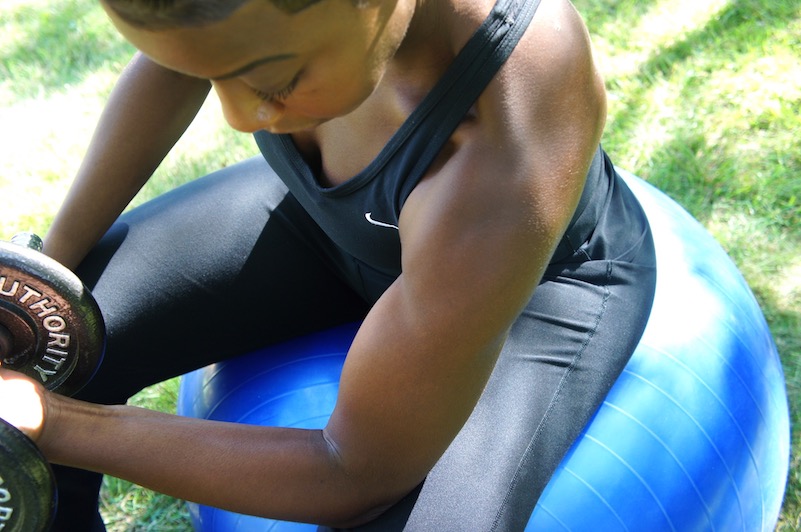Cardiovascular exercise (or simply cardio) is one of the most effective ways to increase your day-to-day calorie expenditures, which is critical for weight loss, long-term weight management, and overall good health. When coupled with regular weight training, cardio can also improve your body composition (the relative distribution of fat and lean mass) by reducing your overall body fat percentage. This is especially beneficial, as having less body fat can substantially reduce the risk of numerous chronic health problems.
Related Article: The Body Mass Index Versus Body Composition: What You Need to Know
People often ask me what my typical week of training looks like.
Truth is, since I’ve trained pretty hard for over 20 years, I typically have to work out at relatively higher intensities in order to maintain the level of physical fitness I so wish to maintain. The goals of my cardio exercise training program are centered on maintaining three things: 1) good health and physical fitness, 2) an ideal body weight and body fat percentage, and 3) the confidence associated with looking and feeling fabulous.
In relation to the latter, I generally have a pear-shaped figure so cardio exercise tends to emaciate my upper body. Therefore, I also perform lots of heavy lifting (especially for my upper body muscle groups) for a more balanced look. Below you’ll find a sample of my cardio exercise routine, which is also complemented by my weekly regimen of weight training.
In general, moderate-to-high-intensity cardio is crucial for pear-shaped women as the lower body houses very large muscle groups that must be appropriately taxed for significant results.
VIDEO: How to Reduce the Appearance of a Pear Shape
Sunday
- Distance running (6-8 miles) at an average pace of 8-10 minutes per mile (I absolutely love to start my week this way)
Monday
- Outdoor/indoor cycling or a spinning class for a duration of 45 minutes to an hour, OR
- Elliptical training at a difficulty level of 14-15 (out of 20) for a duration of 45 minutes to an hour
Tuesday
- Distance running (6-8 miles) at an average pace of 8-10 minutes per mile
Wednesday
- Outdoor/indoor cycling or a spinning class for a duration of 45 minutes to an hour, OR
- Elliptical training at a difficulty level of 14-15 (out of 20) for a duration of 45 minutes to an hour
Thursday
- High-intensity interval training (HIIT) workout (high-speed sprints, burpees, mountain climbers, jumping jacks, and other calisthenics), OR
- Hydro-Tone (water-based) cardio exercise
Friday
- Outdoor/indoor cycling or a spinning class for a duration of 45 minutes to an hour, OR
- Elliptical training at a difficulty level of 14-15 (out of 20) for a duration of 45 minutes to an hour, OR
- Cardio rest day (depending how my body physically feels after a week of training)
Saturday
- Full rest day
Related Article: Three Low-Impact Cardio Alternatives to Running
For maximum results, I make an effort to regularly switch up my cardio exercise routine in quarterly cycles. So, the program you’re looking at now will likely change a bit over the course of a few months.
Related Article: Why You Need to Regularly Change Your Exercise Routine
Now, I wake up every morning with my training plan in mind. However, at least once or twice a month (or more), things just don’t go as planned. In such cases I simply adjust. For instance, during travel, I may have to choose another form of cardio if my hotel doesn’t have any equipment available (outdoor running if an elliptical trainer or bike isn’t available on that scheduled day).
Moreover, if I have an emergency or some type of stressful situation, an hour of meditation may have to replace my cardio session altogether (it happens). In the event that I totally miss a workout, I make a conscious effort to ensure that my calorie consumption is completely intact. I also avoid the urge to go overboard with the next workout in an effort to stay on schedule.
While regularity is necessary for maintaining any exercise training plan, flexibility is also essential for sanity’s sake.
So there you have it! An example of how to cardio exercise training into your workouts. Again, my program is pretty intense but hopefully I’ve provided you with some good information and valuable strategies for developing or enhancing, your own training program. Remember, it’s important that you also combine your cardio efforts with regular weight training for maximum results.
If you’re unfamiliar with the latter, be sure to check out “Weight Training 101: What You Need To Know Before You Lift” and learn everything you need to know about this type of training.
Related Article: How to Perform Cardio Exercise the Right Way







